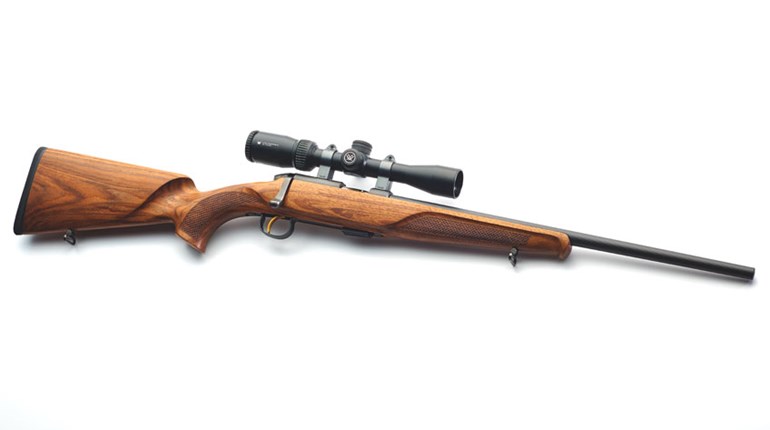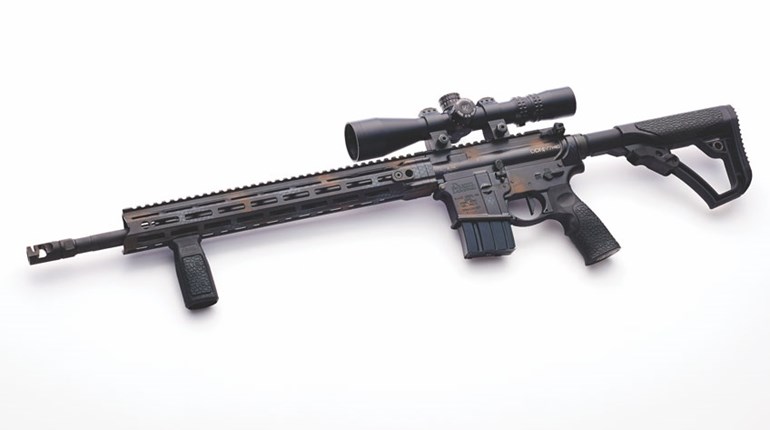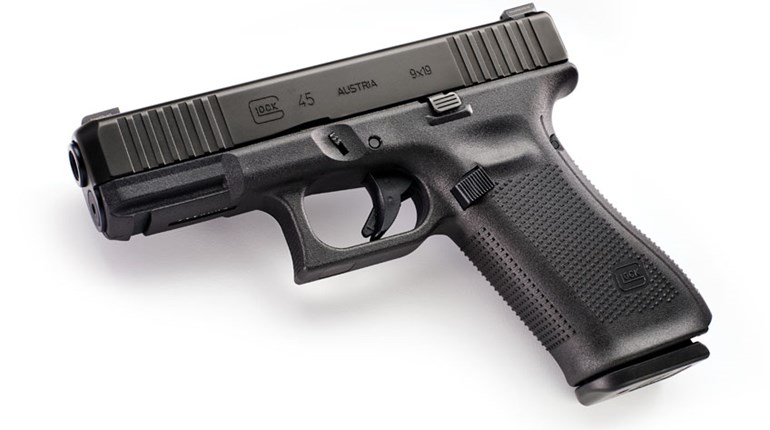
We recognize a risk in the topic of the day—caliber selection for the Carry Life. We’ve no desire to toggle heresy mode to “on,” but also see no way around it. Ponderous balderdash of both the direct and indirect varieties has washed over us in the last few weeks, and it’s time for pitched battle on this front.
Within broad limits, bullet architecture and materials have rendered this conversation (almost idiotically) moot.
<<Cue any “hue and cry” scene you like, though this is a durable favorite.>>
Big bore fans—.45 ACP and, to a lesser extent, .40 S&W—will naturally claim the data is still on their side. Though there remains wide disagreement on the accuracy of testing methods compared to field results, they are on balance correct. All other things being equal, and across all bullet profiles and weights, for defensive purposes you still generally want a comparatively slow-moving bullet that will deposit all its ballistic/kinetic energy in the first object it strikes.
Within broad limits, bullet architecture and materials have rendered this conversation (almost idiotically) moot.This is “knockdown” power in the most time-honored sense. It’s a fuzzy term in actuality, but not without merit, and especially if we accept the notion that the role of the handgun is fight-stopping (a good case made here, ~6:00-7:00) more than wounding or even killing.
“Aha!” cry the smaller caliber fans (mostly 9 mm), and launch into datasets that are often and compellingly in their favor. In fairness, these tilt—enticingly—to modernity in the sense of penetrative, expansive higher velocity properties, as well as substantial round counts before a reload. If it seems our own opening gambit vis a vis projectile technology tilts this way, so be it. (Though any assumptions here, an interloper could unhappily discover, might not be to their liking. Just sayin’.)
Nor would the conversation be complete if we stopped here. Some “specialty” calibers, though here the usage only implies “comparatively rare,” have advantages, either because of very light recoil per unit downrange power (5.7x28mm, or even .22 WMR, anyone?), or because of the physically small handguns they make practical—.380 ACP and smaller. Revolver fans, too, will squeal if unremarked, asserting the (mostly correct) “just pull the trigger again” rubric while ignoring the “heaven help you if you have to reload” side of the coin.
Is it any wonder we echo the lament of Milne’s (A. A., that is) unlikely hero? “Oh bother.”
We think the thoughtful Carry Lifer won’t be overtasked by such a challenge, though it may take a change in perspective. In no special order, here are some ways to fabricate your own winnowing process, and wind up with a defensive firearm that you can use both well and safely.
Exit “Advice”
Just because a trusted friend (or mate, even) carries an XYZ in monster/mini .AB caliber doesn’t mean it’s a good choice for you. Physical differences aside, any recommendations they make—however emphatic or kindly meant—should be cast in the glaring light of performance. Only. If you haven’t seen them shoot their own gun well, no amount of sincerity is likely to validate their recommendation except by luck.
Seriously: Think this recommendation business all the way through, and you’ll come to see they may be suggesting a potentially life-saving artifact that isn’t a good choice for them, either.
Gents, we’re talking especially to you here, and even more especially when it comes to insistently recommending revolvers, for instance, to female friends. This is unadorned testosteronenreflexendummkopfen as our German friends would say—and rudely, unhelpfully presumptive as well. There are lots of good reasons a woman may settle on a revo, but it still needs to be her informed choice.
And, OK, our German pals don’t actually say that, but die Frauen probably would.
Exit “Cool”
Gussy it up however you like—as “cachet,” maybe, or even “élan”—this is merely a daft but well-disguised variation on the “advice” error. We don’t care how imaginatively or successfully the Zablotnicheck AΩ Mark II was used in the movies or on TV. It may indeed be a fabulous firearm, but how it appears to work in media representations should be immaterial to your choice. There’s nothing wrong with enjoying this, mind; just no decisions based thereon.
… Here are some ways to fabricate your own winnowing process.We concede to having done this, if it’s any consolation. We chose a comparatively famous firearm from a noted manufacturer not once, but three times. We were hoping, we guess, that movie flamboyance and promoted improvements would make up for dated engineering. “When pigs fly” about covers it. Point made?
Exit Ego
Contrary to the canard so established and popular in the mainstream media, we find little problematic “ego” in Carry Lifers. The contrast, in fact, is striking. We much more frequently see a humble awareness of one’s own limitations and vulnerabilities. The ego of which we speak is not of the aggressive, assertive type, then, but of a more aspirational character.
Still, it’s a barrier to sound choosing when it comes to caliber selection for defensive purposes. In other words, we’re cautioning against thought—and selection—processes like: “Well, Joe carries a .45, so maybe I really need one, too.”
Simply put, this is a sort of borrowed legitimacy. Again and by luck it may work out, but the odds are poor. It does get us to neatly to our last recommendation, however …
Exit Guesswork
Perhaps the best antidote for the ills we’re bemoaning is right there, and newish Carry Lifers just don’t know it: There is no longer any compelling reason to proceed with a caliber choice based on guesswork. This is so for at least three reasons.
But how it appears to work in media representations should be immaterial to your choice.First, we expect that very few Americans these days live more than an hour’s drive from a venue where they can try modern firearms without buying. Quite naturally, these will include suitable defensive calibers; safe, modern actions; and all the accoutrement thereof. A “pro” tip here, if we may: Don’t compound urgency with expense and, frankly, peculiarity. Many folks will be better off with a modestly-priced used firearm from a readily recognizable maker (and here we offer a rare, unvarnished recommendation of a striker-fired semi-auto). You may decide something else is better in the long run, but an arcane choice compounds both the investment required and the availability of truly good training.
That training is the second of our de-randomizers. The comparative proliferation of quality venues is a substantive, positive change from even five years ago. If you’re unfortunate enough to be in a life circumstance where some degree of emergency attaches to your need for a defensive firearm, even this does not justify a rash and uneducated course of action. Find a certified trainer, even if you must travel some. We think NRA certifications are best, unsurprisingly (and NRA Carry Guard especially so), but always delivered by instructors who can demonstrate with precision the skills they ask of you. Think seriously about finding a competition venue you enjoy as well.
Last and most important, we’ll close the loop on our assertion of the “mootness” of caliber selection: It was trick question. The best caliber—and for that matter defensive firearm—is the one you shoot the best. “Really?” you could quite legitimately ask, and to this we say without qualification, “Yes.”
A caliber that you will train with is the best choice because it will build the best skills. Especially at first, that craft—manifesting as accurate, expeditious employment—will always trump caliber. In the long run, we trust in the caution and judgment on ready display by the nation’s 16-plus million Carry Lifers: You’ll educate and get training for yourselves on whether that first caliber choice can be an enduring one.
Until then, Carry on.
Frank Winn has been studying arms and their relationship to tyranny, meaningful liberty and personal security all his adult life. He has been a firearms safety/shooting instructor for more than 20 years, and earned state, regional and national titles in several competitive disciplines.
































